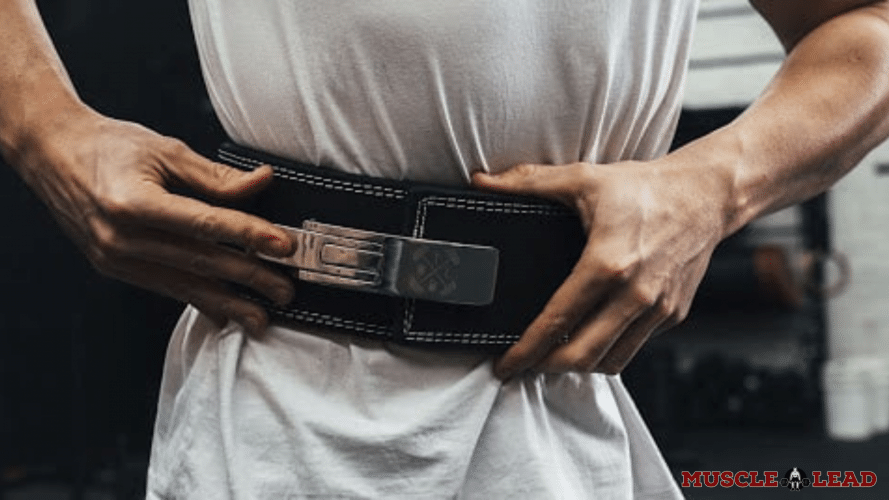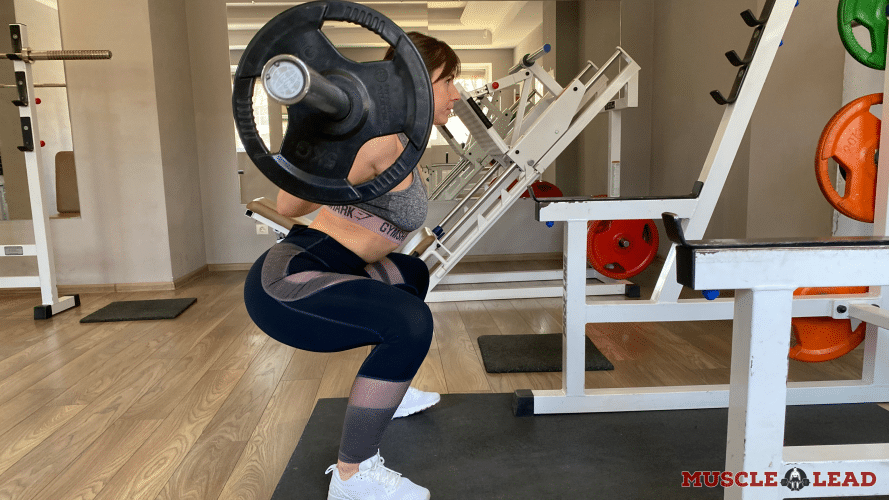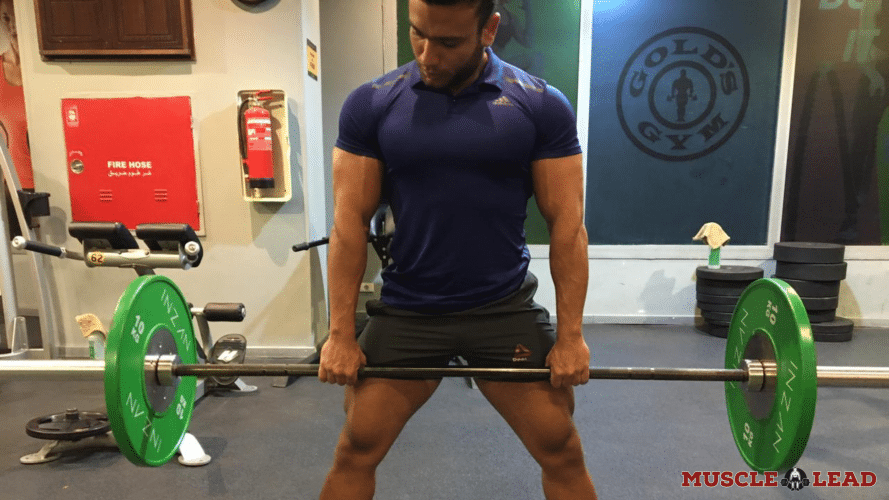Key Points
- You’ll be able to decide whether you need a lifting belt or not depending on your level of training and health condition.
- As a beginner, you should do weight training without a belt for the first few months because your body needs to adapt to certain stabilization movements to lift.
- If you have high blood pressure or an inguinal hernia, you shouldn’t use a lifting belt.
- Once you get your lifting belt, don’t just wear it all the time from the beginning of the workout to the end.
Your ultimate goal as a lifter is simple: Lift more.
Once you master the basics of technique for squats and deadlifts, your focus should be on lifting more weights.
But when should you start using a weightlifting belt? Turns out this answer is not as simple as a certain number for most trainees.
Your level of training and health conditions will come into play when deciding do you need a lifting belt or not.
In this article, we discuss all factors you should consider and break them down one by one. We also describe how to introduce a lifting belt into your training.
What is Your Level of Training?
There are many opinions on this topic and how important it is to wear a belt for deadlifts and squats.
If you’re an intermediate or advanced lifter, you probably already have a belt. If not, you should start using a lifting belt to help you progress and break through your plateaus.
But this question is more for beginners. I see so many beginners at the gym wearing a belt for all the wrong exercises. Check out our article on which exercises are best for lifting belts.
Should Beginners Use a Weightlifting Belt?
As a beginner, your goal should be to learn how to brace and lift weights properly. Most experts recommend training without a belt for the first few months.
As a novice trainee, your body needs to adapt to certain stabilization movements to lift. Learning to brace and building up core strength in the first few months of lifting will pay out in the long term.

After training without a belt for the first few months, you should begin to use a weightlifting belt. Once you’re comfortable lifting without a belt, learning to use a belt will benefit your progress.
At What Weight Should I Use a Belt for Squats
Some people believe you need to be able to squat a certain amount before using a belt. But as recommended by many fitness experts, you can start once you’ve really mastered the mechanics.
Some sites will recommend you should wait until you can lift at least 1 to 1.5 times your body weight. Although this is a great guideline, it’s not a necessary one.
The ability to use a weightlifting belt is a skill. Delaying the learning curve of using a lifting belt does not benefit a novice trainee in any way.

Instead, as a novice trainee, you should take advantage of the benefits of a lifting belt.
The following is a great table for squat strength standards and a ratio of your 1 RM to your bodyweight. After novice level, a weightlifting belt would be beneficial.
| Strength Level | Bodyweight Ratio (Male) | Bodyweight Ratio (Female) |
| Beginner | 0.75x | 0.50x |
| Novice | 1.25x | 0.75x |
| Intermediate | 1.50x | 1.25x |
| Advanced | 2.25x | 1.50x |
| Elite | 2.75x | 2.00x |
If you feel that extra bracing power will help you during a specific set, wear the belt!
At What Weight Should I Use a Belt for Deadlifts
For deadlifts, the decision to start using a weightlifting belt also depends on your strength.
The stronger you get, the slower the gains. Overall, follow these deadlift strength standards as a guide.

Usually, after achieving novice level ratios, getting a lifting belt will help you move to intermediate strength.
| Strength Level | Bodyweight Ratio (Male) | Bodyweight Ratio (Female) |
| Beginner | 1.00x | 0.50x |
| Novice | 1.50x | 1.00x |
| Intermediate | 2.00x | 1.25x |
| Advanced | 2.50x | 1.75x |
| Elite | 3.00x | 2.50x |
Who Shouldn’t Use a Lifting Belt?
When you lift any heavy weight, your ideal physical cues should be as follows: Brace > Lift > Release.
The goal of bracing is to increase intra-abdominal pressure which develops core strength.
But what if you have a certain health condition getting worse with bracing?
If you have high blood pressure or an inguinal hernia, you shouldn’t be using a belt. The Valsalva technique may do you more harm than good if you have these conditions.
The other group of lifters not benefiting from using a belt are athletes. Specifically, athletes in team sports whose performance is not directly related to weightlifting.
The issue here is if you can’t wear a belt during your sport, you shouldn’t wear it during training.
If your core fundamentals about lifting and bracing are lacking, don’t train with a belt. Get those down first.
Introducing Your Lifting Belt into Training
So you’re ready to start wearing a weightlifting belt while training, but how do you start?
Should you wear your belt all the time? The short answer is no.
Once you get your lifting belt, don’t just wear it all the time from the beginning of the workout to the end. As I discussed earlier and, in my article, use your lifting belt only during certain exercises.
On your first day of getting your weightlifting belt, try it on and go through the movements. You will feel some discomfort especially if it’s a leather powerlifting belt. It will take some time to break in and you can use our guide to speed things up.
What Are The Differences Between a Lever vs Prong Belt?
Structure your lifting routine with the heaviest sets for your lifting belt. If you’re following a strength routine, you will be progressively overloading your muscles. Every workout may be heavier and heavier. In this case, I would use the weightlifting belt during my whole set.
A lifting belt is perfect for heavy compound movements such as deadlifts, squats, and barbell rows. Other exercises can include bench press, hip thrusts, and some Olympic style exercises such as clean and jerk.
Training with and without a belt is optimal. Once reaching an intermediate level of strength, lifting without a belt will help with technique and diagnosing weaknesses. Lifting with a belt can help you push out maximal strength gains during PRs.
No! As a beginner, your first concern should be mechanics and technique. Beginners should work on gaining strength and proper mobility at first. As more weight is added to your lifts, a lifting belt is a great add-on.
Final Thoughts
Knowing when you should start using a weightlifting belt can be confusing at times. But understanding the importance of good foundations will go a long way. After getting your belt, make sure you grasp the idea of wearing a lifting belt the right way.
With such a simple aid as a weightlifting belt, you’ll be on your way to heavier movements and building strength. Let me know if you have any questions about lifting belts below!
More about Lifting Belts:





